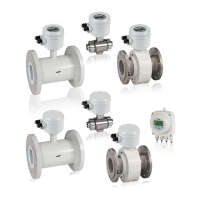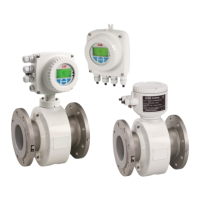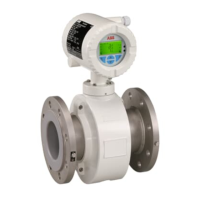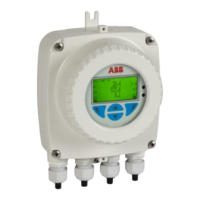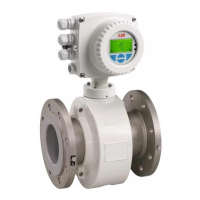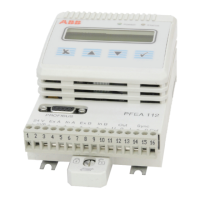FEP630, FEH630 ELECTROMAGNETIC FLOWMETER | OI/FEP630/FEH630-EN REV. D 31
Sensor type HygienicMaster
G12024
1
1 Process connection adapter
Figure 37: Sensor, type HygienicMaster
Perform grounding as shown in the figure. The measuring
medium is grounded via the process connection adapter, so
additional grounding is not required.
Grounding for devices with protective plates
The protection plates are used to protect the edges of the meter
tube liner, e.g. for abrasive media.
In addition, the protection plates function as a grounding plate.
• For plastic piping or piping with insulating liner, electrically
connect the protection plate in the same manner as a
grounding plate.
Grounding with conductive PTFE grounding plate
Grounding plates made of conductive PTFE are optionally
available for nominal diameter ranges of DN 10 to 250. These are
installed similar to conventional grounding plates.
Devices with extended diagnostic functions
For devices with extended diagnostic functions different
installation conditions may be valid.
For additional information, see Extended diagnostic functions
on page 118.
Installation and grounding in piping with cathodic
corrosion protection
The installation of electromagnetic flowmeters in systems with
cathodic corrosion protection must be made in compliance with
the corresponding system conditions. The following factors are
especially important:
1. Pipelines inside electrically conductive or insulating.
2. Piping consistently and widely on cathodic corrosion
protection potential. Or mixed systems with ranges on
cathodic corrosion protection potential and ranges on
functional ground potential.
• In the case of pipes free from stray current and
insulated on the inside with liner, the sensor should be
installed in the piping insulated with grounding plates
(upstream and downstream from the sensor). The
cathodic corrosion potential is bypassed around the
sensor. The grounding plates upstream and
downstream of the sensor are connected to
functional ground (Figure 38 / Figure 39).
• If the occurrence of external stray currents is to be
expected in piping with internal insulation (e.g. in the
case of long pipe sections in the vicinity of power
supply units), an uninsulated pipe of approx. ¼ × DN
of length should be provided upstream and
downstream of the sensor in order to deviate these
external stray currents away from the sensor
(Figure 40).

